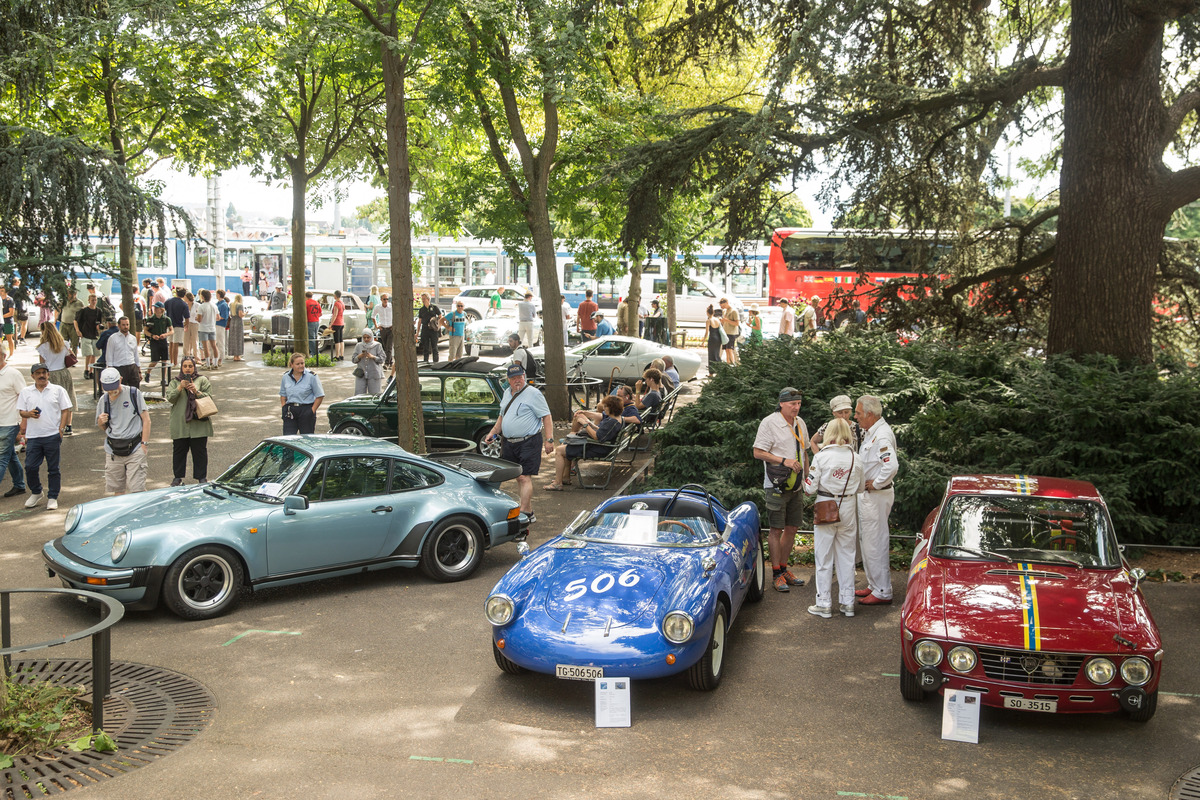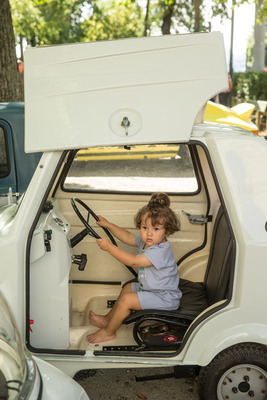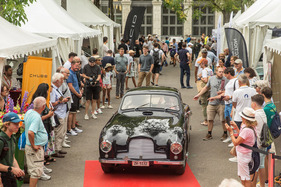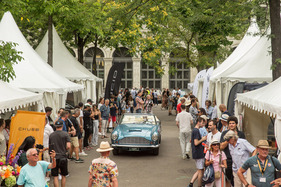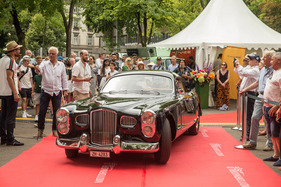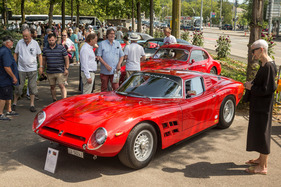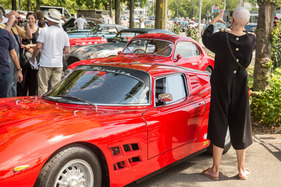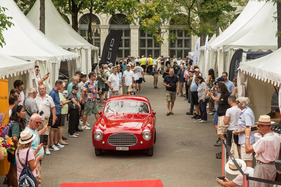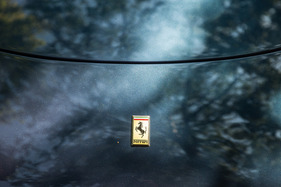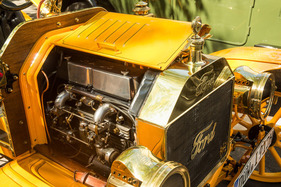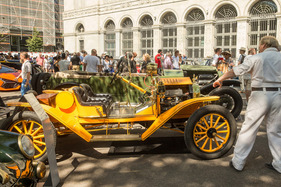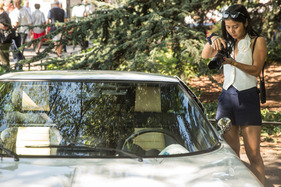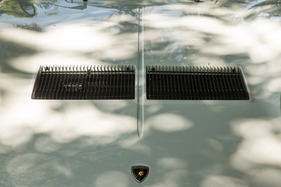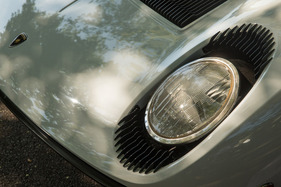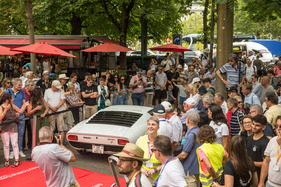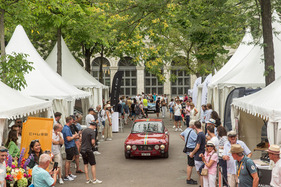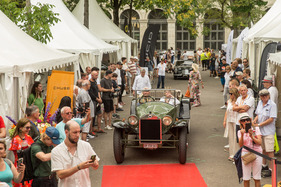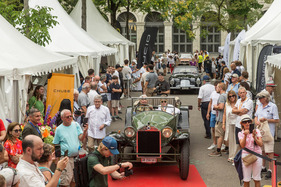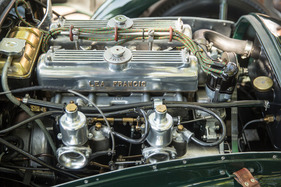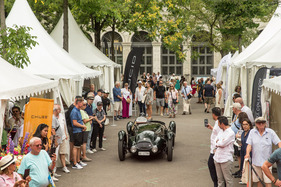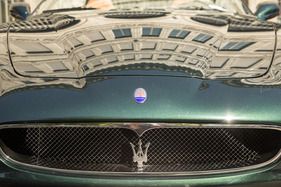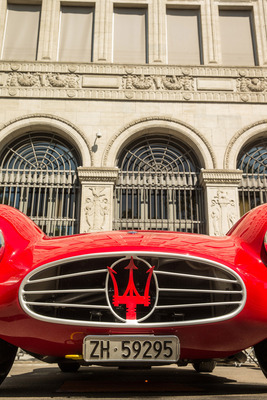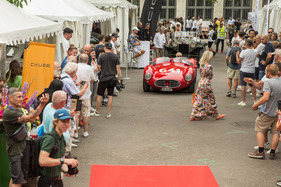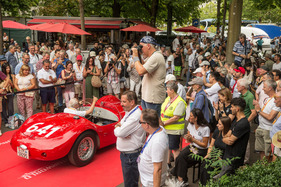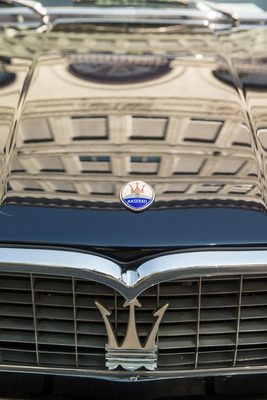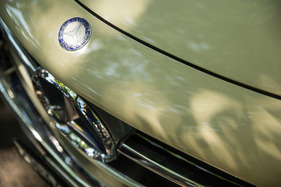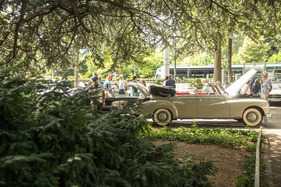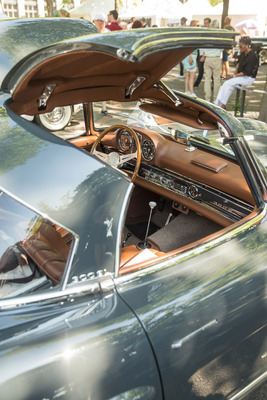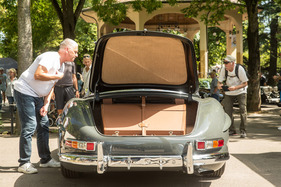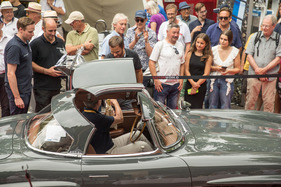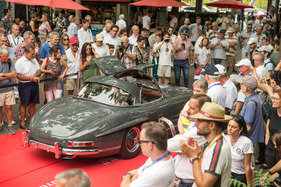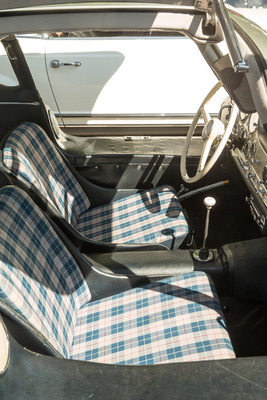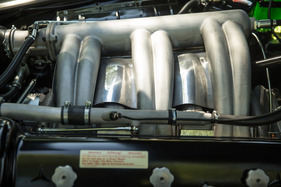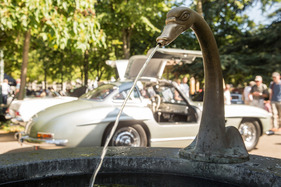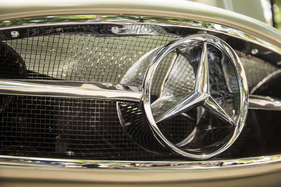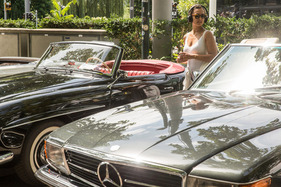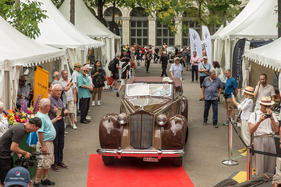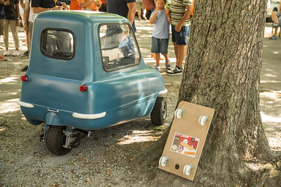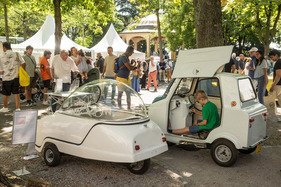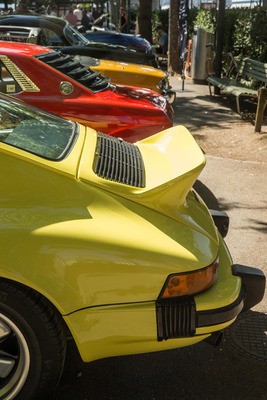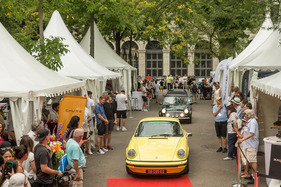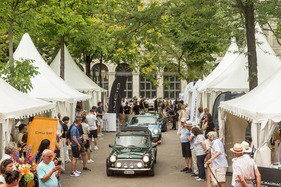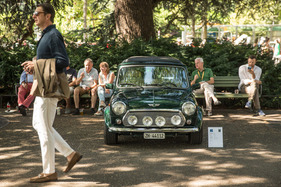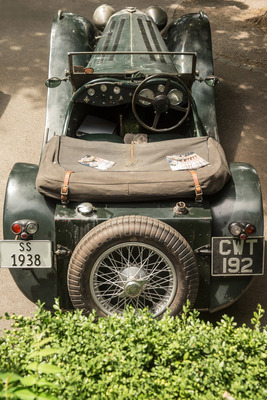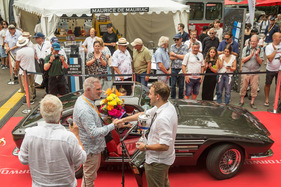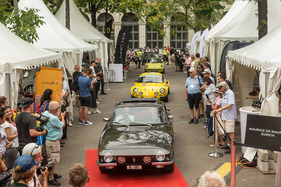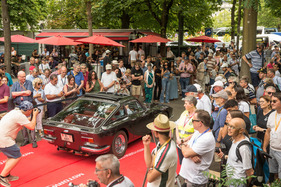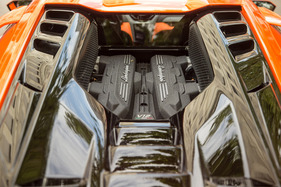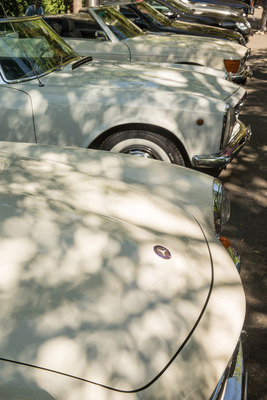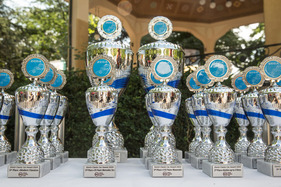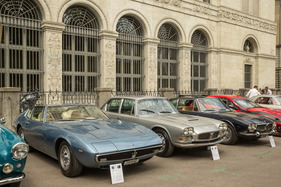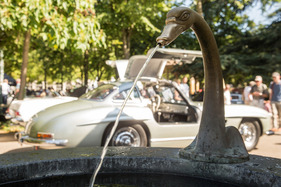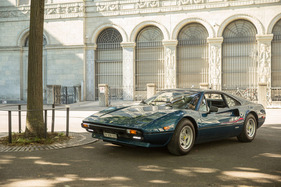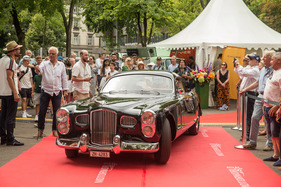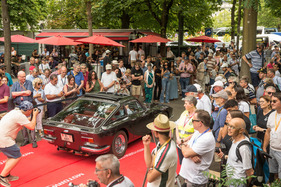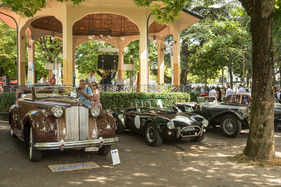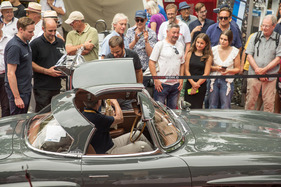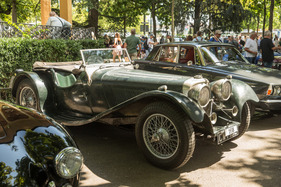It was once the Raid Suisse-Paris, whose Zurich participants met in advance for a prologue. The aim after the meeting on Wednesday was to set off in the direction of Basel in order to take part in the first major Swiss classic car rally - from Basel to Paris - on the following Thursday. Today, the raid is heading east, south or simply through Switzerland. But one event on Bürkliplatz in August and on a Wednesday has remained: it has been called the "Zurich Classic Car Award" for some time now - Zurich, please, pronounced in English with a voiced "S" and with "U" instead of "Ü" - and in the middle of a city like Zurich, which has always had a divided relationship with cars, it is a valuable, unique opportunity to hold a Concours d'Elegance in the midst of passers-by, lunch breakers from the nearby financial district and tourists.
This year, the mix of the public, the participants, the visitors, the interested passers-by and the uninitiated who happened to be in the middle of it all was perfectly suited to the mix of vehicles, which ranged from the smallest production car in the world - the Peel manufactured on the Isle of Man in the 1960s - to the most powerful road car of the early 1930s - the Bugatti T50 with over 200 hp. What is fascinating, and just as fitting for the venue, is the atmosphere on the square in question, which - to put it casually - is bordered at one end by a public convenience store and a bratwurst stand, and at the other end by the Zurich branch of the Swiss National Bank.
And in the middle of it all is an open pavilion, a kiosk building in the classic Turkish sense of the word, which is otherwise used for music performances, Christmas candle-lighting or spontaneous rallies. Or, as on Wednesday, August 14, 2024, for the ZCCA, a top classical music event with the flair of a spontaneous after-work party. Or rather a work break, where both the general management and the cleaning assistants and random guests are invited. In short: Zurich is different. It shines, flaunts itself slightly, but is still very folksy, and the popular smell of bratwurst - we'll leave out the urinal olfactorically here - wafts over the whole thing.
Lots of prizes
It is in the nature of things that there can usually only be one winner. The trick is to choose the right classes so that the luck can be distributed fairly. This year, classic cars were presented in the following categories: Pre-War, Post-War up to 1960, 1960-69, 1970-79, Youngtimer up to 2005. There were also prizes for the "Best Documented Car", the audience award, the best unrestored car and, of course, the main winner: the "Best of Show". There were also special prizes for 110 years of Maserati and 70 years of Mercedes-Benz SL.
Sascha Bäggli's Bentley Mk VI with bodywork by Facel Métallon emerged as the overall favorite of the jury. The car belonged to the later Facel-Vega founder Jean Daninos, who had it built in his factory for his wife.
Whether the audience was either infiltrated by numerous insiders and experts or whether the brittle, British charm of hand-built GRP bodies is en vogue is debatable. The 1971 Trident Venturer V8 - a magnificent representative of British innovation, or rather the art of improvisation, from the early 1970s in a class of its own - by Daniel Pfirter was able to secure the audience award in any case.
There were also some surprise winners where the jury was allowed to decide on its own. It is surprising that the Bugatti T50 of Werny and son Ralph Weibel from Basel did not win the pre-war car class. The SS Jaguar 100, probably the last unrestored car of this type, owned by Christian J. Jenny in second place, on the other hand, was a strong statement of acceptance and appreciation for untouched classics. The winning car in the pre-war category was a Risch-Packard Super Eight with a cabriolet body by Graber, which was announced as such after all the other classes in a somewhat improvised award ceremony.
The winner of the Youngtimer class, at the other end of the timeline, was also remarkable. A Jaguar XJ220 that drives uncomplainingly through the heat of Zurich's city traffic will probably never be seen again. Owner Philipp Husistein remarked at the prize-giving ceremony that it was getting quite warm in the car. In the morning, the man from Aarau drove into Bürkliplatz with the glass engine flap of the hypercar, of which only 282 were built in the early 1990s, raised.
The special classes
The Maserati A6 CGS/54 by Gian-Pietro Rosetti rightly took the special prize in the Maserati class. In the "70 Years of Mercedes-Benz SL" category, it was - equally unsurprisingly - a 300 SL Roadster, albeit with an ultra-rare coupé roof with small flaps in the roof cut-out, a kind of homage to the direct predecessor. In an even more complex selection process than ever before, the representatives of The Motorchain chose an Aston Martin DB2 as the "Best Documented Car", with its almost complete dossier including a build sheet, the old sales invoice or, in short, a documented, fully recorded history.
But it would be going too far to name all the ranked participants here. In keeping with the charm of this event, even those who came away empty-handed took it very sportingly. Sitting in the shade of a tree and observing the crowd's reactions to his SS 100, which was marked by scratches, torn nitro paint, peeling chrome and stains of unknown origin, Christian Jenny - as mentioned, a deserved runner-up in the class - said: "Whether a winner or not, it doesn't matter here in the end. Once again, I've met a lot of dear friends and a good number of interested people. That's much more important."
For Christoph Lehmann, the long-time organizer of the ZCCA (this edition was the thirteenth of its kind), this was the last under his direction. However, it will be continued under his expert guidance.
